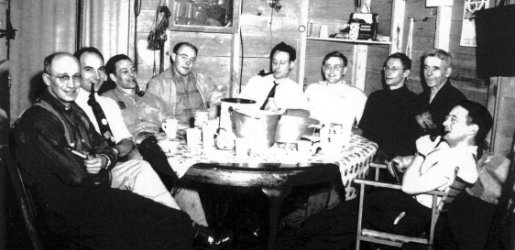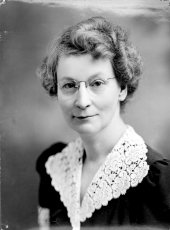The Geophysics Research Emphasis
In 1927 the State Legislature approved a broadening of the charge of the College and a new name, the Michigan College of Mining and Technology, or MCMT for short. The case was made that “the successful mining engineer and metallurgical engineer require broad knowledge of all phases of engineering, and as such are really entitled to recognition as general engineers, equipped to undertake work in almost any branch of the engineering profession.” Hence, the broadened scope was put forward as a recognition of the existing facts. At the time of the change the total College enrollment was near 300 students. Shortly after this time, in 1933, a Bachelor of Science degree in General Science first appears, which one could claim is the first non-engineering degree to be offered by the College.
It appears that in the late 1920’s and very early 1930’s there was a significant push, backed up with some State funding, to further develop geophysics research within the department and an MS program in Geophysics was created. In the early 1930’s, the early Depression years, Irwin Roman and Jerry Service were brought on board. Irwin Roman was the second faculty member in the department to have an earned PhD and the first to have earned it prior to being hired. Like Grant’s PhD, Roman’s was from the Math department at the University of Chicago and was in the area we now call mathematical physics. Roman was quite the prolific “researcher” publishing several papers per year. Roman left after just 3 years, first temporarily to do research in Nevada, and then permanently to work for the US Bureau of Mines and Geologic Survey. Roman educated others in the department on the interpretation of ground resistivity measurements and this had a significant influence on the research in the department even after he left.

Jerry Service was hired shortly after Roman and also came with an earned PhD, in his case from Ohio State and the first in our department to be a PhD “in Physics.” Since few faculty hires from this time until the 1960’s came with a PhD, one is led to think that the Depression economy might have had something to do with the availability of Roman and Service. Service also had a large number of publications though he preferred short technical books and similar publications rather than articles in the scientific journals.
First Female Faculty and Student

Ella Wood was the first female professor at Michigan Tech, having earned her Ph.D. at the University of Wisconsin. She first arrived at Michigan College of Mining and Technology in 1927 to act as an assistant professor in English and geography. Wood also supervised many extracurricular organizations, such as the debate team and drama. She also acted as the faculty advisor for the school’s low number of female students.
Margaret R. Chapman (nee Holley) was the first woman to finally receive a degree from the school, earning a B.S. in General science in 1933, and another degree in Chemistry in 1933. She was raised in Lake Linden and graduated from Calumet High School, where she then went off to receive a degree from Lawrence College before coming back to earn her degrees from Michigan College of Mining and Technology. She also worked towards her master’s degree at MTU and worked in the school’s corrosion lab. Michigan Tech seemed to run in Chapman’s family, as her father, husband, and son were also Tech alumni.
For a complete history of Women at Michigan Tech please visit Women at Michigan Technological University and A Brief History of Women at Tech.
The Great Depression
During the 1930’s the physics department produced about a dozen scientific publications, all in some area of geophysics. Any extra state funding dried up rather quickly during the depression years resulting in faculty pay cuts and virtually no new hires during the late 1930’s. At the same time the research effort tapered off to pre-1930’s levels and the emphasis returned to the engineering education role of the department. Scientific publications by the Physics faculty were few and far between starting in the late 1930’s and for at least the next 30 years. While the department continued to include a strong geophysics presence in the curriculum, it considered itself foremost a “teaching department."